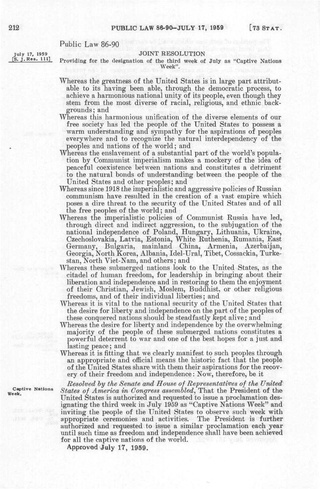Related Research Articles

In the United States, a national monument is a protected area that can be created from any land owned or controlled by the federal government by proclamation of the president of the United States or an act of Congress. National monuments protect a wide variety of natural and historic resources, including sites of geologic, marine, archaeological, and cultural importance. In contrast, national parks in the U.S. must be created by Congressional legislation. Some national monuments were first created by presidential action and later designated as national parks by congressional approval.

The Antiquities Act of 1906 is an act that was passed by the United States Congress and signed into law by Theodore Roosevelt on June 8, 1906. This law gives the president of the United States the authority to, by presidential proclamation, create national monuments from federal lands to protect significant natural, cultural, or scientific features. The Act has been used more than a hundred times since its enactment.
German-American Day is a holiday in the United States, observed annually on October 6 under Pub. L.Tooltip Public Law 100–104, 101 Stat. 721. It celebrates German-American heritage and commemorates the founding of Germantown, Pennsylvania, in 1683.

Leif Erikson Day is an annual observance that occurs on October 9. It honors Leif Erikson, the Norse explorer who, in approximately 1000, led the first Europeans believed to have set foot on the continent of North America.
In the United States, presidential job approval ratings were first conducted by George Gallup to gauge public support for the president of the United States during their term. An approval rating is a percentage determined by polling which indicates the percentage of respondents to an opinion poll who approve of a particular person or program. Typically, an approval rating is given to a politician based on responses to a poll in which a sample of people are asked whether they approve or disapprove of that particular political figure. A question might ask: "Do you approve or disapprove of the way that the current president is handling their job as president?".
National Hispanic Heritage Month is annually celebrated from September 15 to October 15 in the United States for recognizing the contributions and influence of Hispanic Americans to the history, culture, and achievements of the United States.
White Cane Safety Day is a national observance in the United States, celebrated on October 15 of each year since 1964. The date is set aside to celebrate the achievements of people who are blind or visually impaired and the important symbol of blindness and tool of independence, the white cane.

Irish Heritage Month is an annual observance originating in the United States, where it is known as Irish-American Heritage Month. It has received official recognition from governments in the United States and Canada. It was first celebrated by proclamation of the President and Congress in the United States to honor the achievements and contributions of Irish Americans. The heritage month is in March to coincide with Saint Patrick's Day, the Irish national holiday on March 17. Heritage Months are usually proclaimed by nations to celebrate centuries of contributions by a group to a country.
Asian American, Native Hawaiian and Pacific Islander Heritage Month is observed in the United States during the month of May, and recognizes the contributions and influence of Asian Americans, Native Hawaiians and Pacific Islander Americans to the history, culture, and achievements of the United States.
In the United States, a presidential transition is the process during which the president-elect of the United States prepares to take over the administration of the federal government of the United States from the incumbent president. Though planning for transition by a non-incumbent candidate can start at any time before a presidential election and in the days following, the transition formally starts when the General Services Administration (GSA) declares an “apparent winner” of the election, thereby releasing the funds appropriated by Congress for the transition, and continues until inauguration day, when the president-elect takes the oath of office, at which point the powers, immunities, and responsibilities of the presidency are legally transferred to the new president.
Native American Heritage Day is a civil holiday observed on the day after Thanksgiving in the United States.

Jewish American Heritage Month (JAHM) is an annual recognition and celebration of American Jews' achievements and contributions to the United States of America during the month of May.
On August 3, 1990, President of the United States George H. W. Bush declared the month of November as National American Indian Heritage Month, also referred to as Native American Heritage Month. The bill read in part that "The President has authorized and requested to call upon Federal, State and local Governments, groups and organizations and the people of the United States to observe such month with appropriate programs, ceremonies and activities". This landmark bill honoring America's tribal people represented a major step in the establishment of this celebration which began in 1976 when a Cherokee/Osage Indian named Jerry C. Elliott-High Eagle authored Native American Awareness Week legislation the first historical week of recognition in the nation for native peoples. This led to 1986 with then President Ronald Reagan proclaiming November 23–30, 1986, as "American Indian Week".

The Reagan era or the Age of Reagan is a periodization of recent American history used by historians and political observers to emphasize that the conservative "Reagan Revolution" led by President Ronald Reagan in domestic and foreign policy had a lasting impact. It overlaps with what political scientists call the Sixth Party System. Definitions of the Reagan era universally include the 1980s, while more extensive definitions may also include the late 1970s, the 1990s, and even the 2000s. In his 2008 book, The Age of Reagan: A History, 1974–2008, historian and journalist Sean Wilentz argues that Reagan dominated this stretch of American history in the same way that Franklin D. Roosevelt and his New Deal legacy dominated the four decades that preceded it.

"Captive Nations" is a term that arose in the United States to describe nations under undemocratic regimes. During the Cold War, when the phrase appeared, it referred to nations under Communist administration, primarily Soviet rule.

Polish American Heritage Month is an annual event celebrated in October by Polish American communities. It was first celebrated in 1981 after organization by Michael Blichasz, President of the Polish American Cultural Center in Philadelphia. Originally it was celebrated in August at various gatherings, travel events, and culturally-significant locations in Pennsylvania. The Polish American Cultural Center and the Polish American Congress lobbied politicians at the state and national level to make August the month for Polish heritage. In 1984, House Joint Resolution 577 passed, making August Polish American Heritage Month. President Ronald Reagan urged all Americans to join in the celebration honoring Polish heritage in the United States. The month was changed to October in 1986 to aid participating schools in organization during the school year, and October holds significance as the month when the first Polish settlers came to Jamestown, Virginia.
National Arab American Heritage Month (NAAHM) takes place in April. It celebrates the Arab American heritage and culture and pays tribute to the contributions of Arab Americans and Arabic-speaking Americans.
National Childhood Cancer Awareness Month is an annual national health campaign organized by major childhood cancer organizations to increase awareness of pediatric cancer and to raise funds for research into its cause, prevention, diagnosis, treatment and cure.
Caribbean-American Heritage Month is celebrated by proclamation of the President and Congress in the United States in June to honor the achievements and contributions of Caribbean immigrants and their descendants living in the United States, particularly in government, sports, entertainment, and the arts. Events are held throughou the month celebrating and educating the public about Caribbean-American history and culture.
References
- ↑ "ITALIAN-AMERICAN HERITAGE MONTH - October". 12 February 2024.
- ↑ "Mission Statement of the Committee to Observe October as Italian-American Heritage Month".
- ↑ Bush, George H.W. "Proclamation 6045—Italian-American Heritage and Culture Month, 1989". The American Presidency Project. Retrieved 2018-04-13.
- ↑ Bush, George H.W. "Proclamation 6218—Italian-American Heritage and Culture Month, 1990". The American Presidency Project. Retrieved 2018-04-13.
- ↑ Clinton, William J. "Proclamation 6723—Italian-American Heritage and Culture Month, 1994". The American Presidency Project. Retrieved 2018-04-13.
- ↑ Obama II, Barack H. "Proclamation 8585—Italian American Heritage and Culture Month, 2010". The American Presidency Project. Retrieved 2018-04-13.
- ↑ Biden Jr., Joseph R. (2022-10-07). "A Proclamation on Columbus Day, 2022". The White House. Retrieved 2022-10-11.